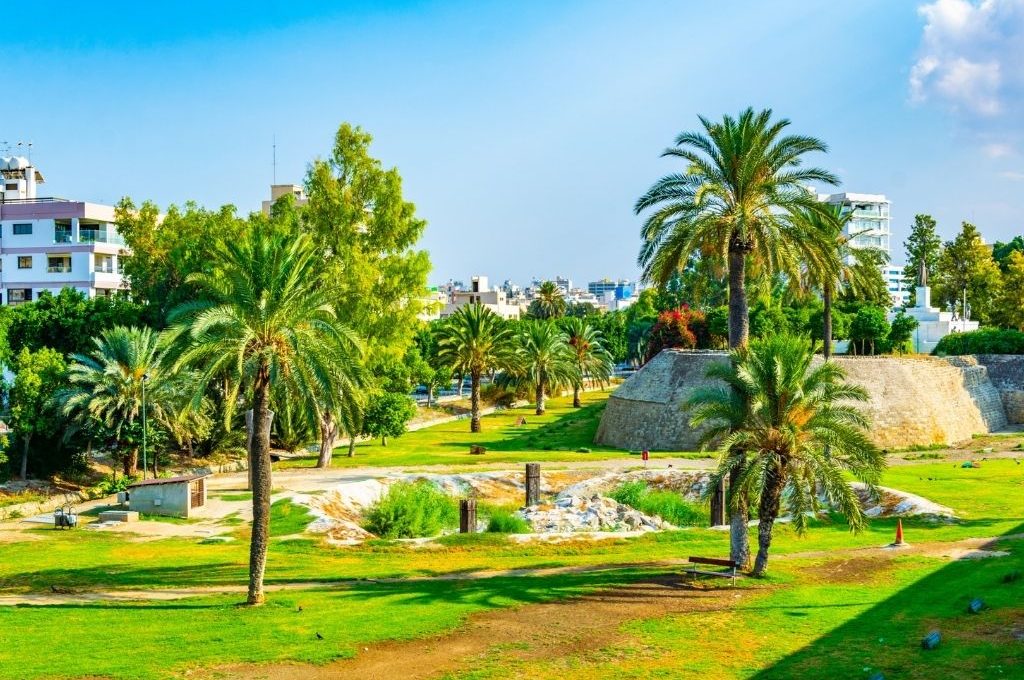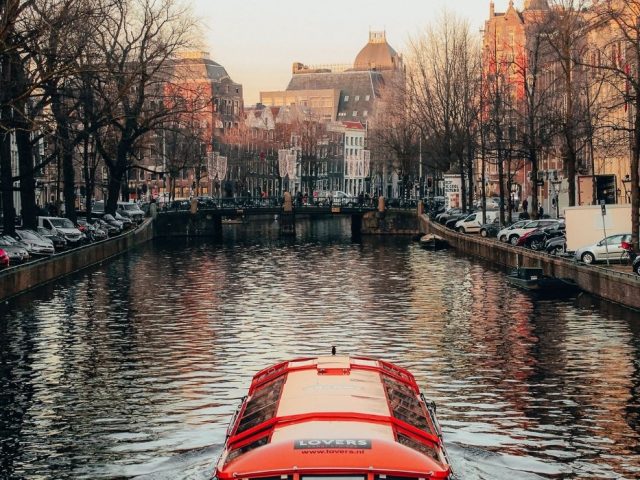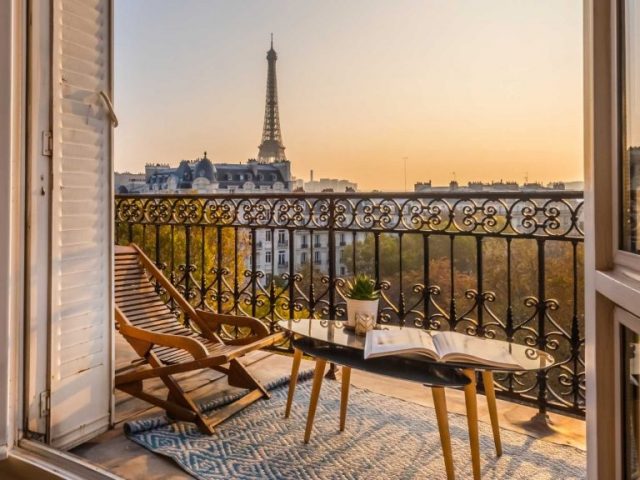Nicosia is the most populous city and the capital of the Turkish Republic of Northern Cyprus. Apart from being famous for its nightlife, the city’s most distinctive feature is that it is a divided city. Yes, you read it correctly. 🙂 Nicosia is the world’s only divided capital. Turks live in the north of the city, and Greeks live in the south. Let’s take a look at this warm paradise together!
Before we start, let’s remind you: don’t forget to download the Piri Guide mobile app to explore Nicosia step by step with your personal and digital tour guide! 😊
Where is Nicosia?
The capital of the Turkish Republic of Northern Cyprus, Nicosia, the third-largest island in the Mediterranean, is located in the middle of the Mesaoria Plain. It is the most populous city in Cyprus. Additionally, it serves as the cultural, industrial, and commercial center of Cyprus.
When To Visit Nicosia?
Bad news for travelers who prefer the cold! Even during the coldest periods, like January-February, the temperature stays around 15 degrees. On the bright side, from April to November, everyone can comfortably enjoy the sea. A paradise for beach lovers. 🙂
Places to Visit in Nicosia
Nicosia Walls
During the Lusignan Kingdom period, Nicosia was governed with a medieval feudal city concept and remained the administrative capital of the island. In this era, the Lusignans, just like in other cities on the island, built defensive walls in Nicosia. Although the city walls in Nicosia, which still exist and add great beauty to the city, were constructed by the Lusignans, their final form was brought by the Venetians. These walls, which are one of the most beautiful and perfect examples of military architecture, are 5 km long and consist of 11 towers.
Kyrenia Gate"
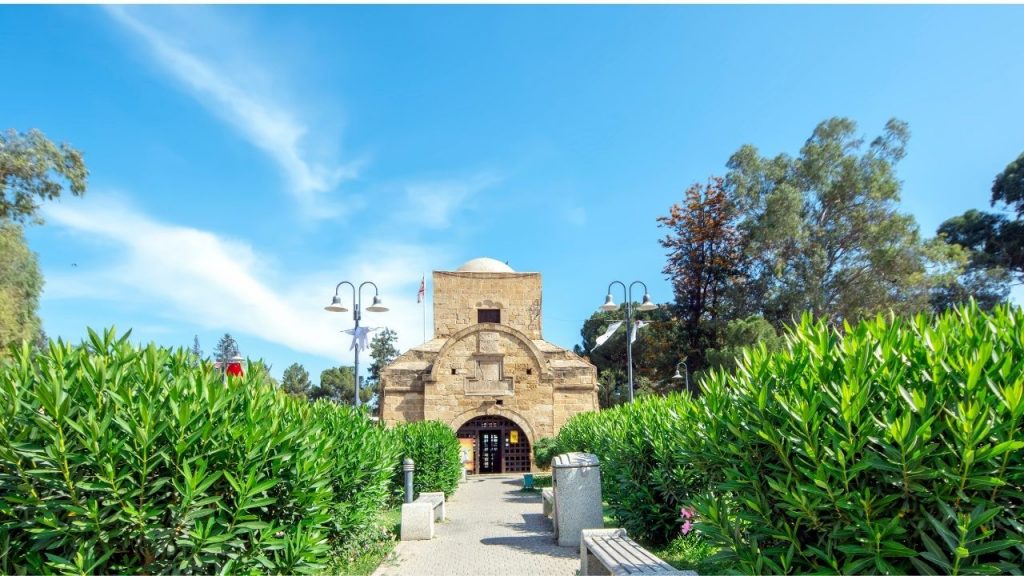
The name of Kyrenia Gate can be a bit misleading because the gate is located in Nicosia. 🙂 The gate is named after Francesca Barbaro, a Venetian soldier and architect of the time when it was built. It was restored and enlarged by the Ottomans in 1821. Its current name is taken from the beginning of the administration of South Cyprus. Nowadays, there is a tourism office inside Kyrenia Gate. You can visit and get information and advice about your trip to Cyprus.
Venetian Column
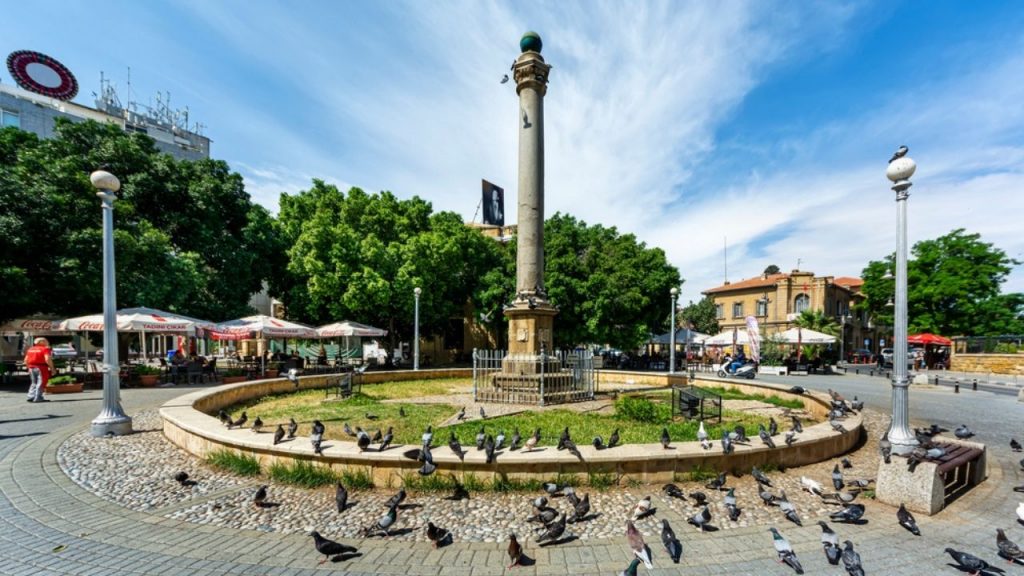
On top of the column, there used to be the symbol of the Venetians from that era, known as the ‘St. Mark Lion,’ a winged lion. On the hexagonal base where the column sits, there were marble coats of arms belonging to noble families affiliated with the Venetian dynasty. However, only the coats of arms of 6 families have survived to the present day.
In 1570, when the Ottomans took the island, they removed the St. Mark Lion from the Venetian Column.
During the British Colonial period in 1915, a copper sphere was placed on top of the column. This sphere, which became a symbol of the British, signifies ‘the sun never sets on the British Empire’ in meaning.
By the way, while we’re talking about Venice, let’s remind you. You can also take a look at our Venice Travel Guide.
Dervish Pasha Mansion

Dervish Pasha Mansion belongs to Dervish Pasha, who was responsible for the publication of the first newspaper in Cyprus. Today, it is used as the Ethnography Museum. We recommend that travelers interested in the Ottoman period of Nicosia or 19th-century Ottoman architecture definitely visit. In the museum, you can see various items from swords used during that period to cutlery sets, from gas lamps to candle holders.
Grand Inn
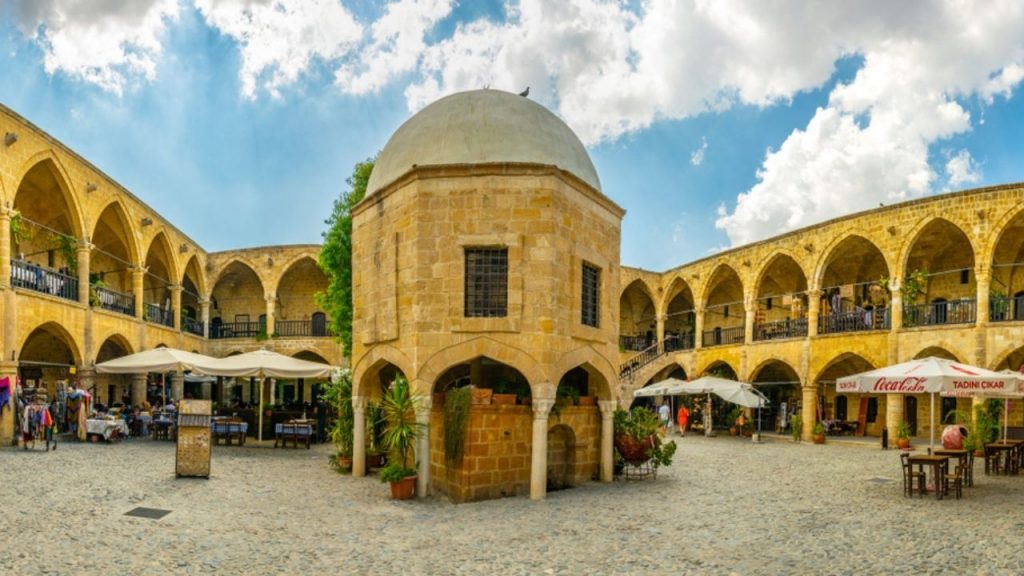
Grand Inn is one of the oldest Turkish structures in Nicosia. This inn was built, inspired by Koza Han in Bursa.
At one point during the British administration, Grand Inn was even used as a prison. Today, it serves as a cultural center where various shops and workshops operate, different arts are practiced, and concerts and exhibitions are organized.
St. Sophia Cathedral
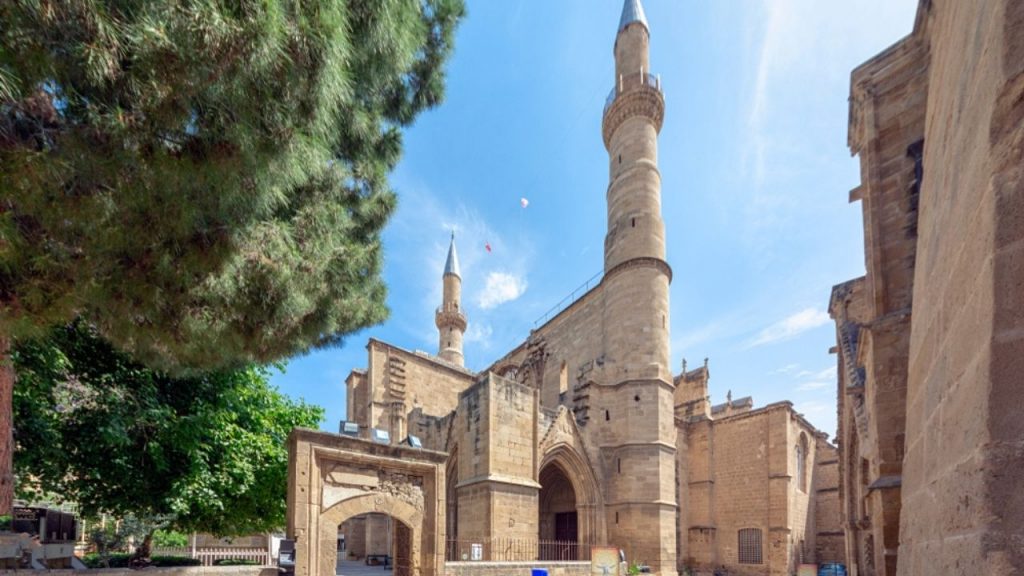
St. Sophia Cathedral is a place where the Lusignan Kings of Cyprus were crowned with a ceremony to receive the title of King of Cyprus. In later years, the cathedral was also used as a Latin Cathedral where some Lusignan nobles and certain Lusignan Kings were buried.
In 1570, with the conquest of Nicosia by the armies of Sultan Selim II, the cathedral was converted into a mosque. Initially, it was called Nicosia Hagia Sophia. On August 13, 1954, the mufti of Cyprus changed the name of the mosque in memory of Ottoman Sultan Selim II, who was on the throne during the conquest of Cyprus. The mosque began to be called ‘Selimiye Mosque.’
You can check the official website of Nicosia Municipality for the visiting hours of the mosque.
St. Nicholas Church
Originally built as a church during the Lusignan period, in the Venetian period, it was used as St. Nicholas Church by the Orthodox community. When the Ottoman period arrived, the building was used for a completely different purpose. The structure, once used as a textile market, became a business center between 1760-1767, where Turkish, Greek, and Armenian merchants sold various foodstuffs.
For now, this is all for Nicosia. If you are curious about Cyprus, Piri is with you! You can use your digital guide with our tours in Kyrenia, Nicosia, and Famagusta, either in the comfort of your home or while exploring Cyprus. All with the privilege of our Cypriot guide, Şirin Suha! Just download the Piri Guide mobile app.

